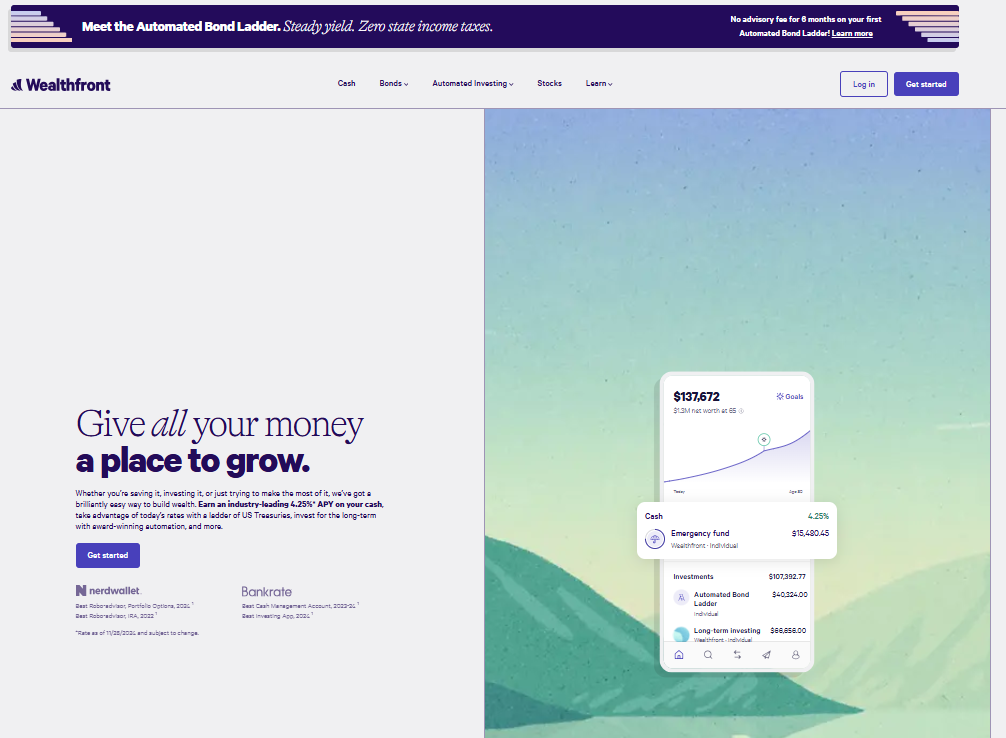For More Free Videos, Subscribe to the Rhodes Brothers YouTube Channel.
“Did you know that Bitcoin’s price is closely tied to the ebb and flow of global money supply? Understanding this relationship could be your secret weapon to capitalizing on the next big crypto opportunity.”

If you’ve ever wondered how major economic decisions — like China injecting billions into its economy — impact Bitcoin, you’re not alone. Bitcoin’s unique positioning in the financial world makes it a magnet for global liquidity. When countries like China unleash massive stimulus packages, it doesn’t just affect their local markets — it ripples across the globe, including the cryptocurrency space.
As John S. Rhodes of the Rhodes Brothers says: “Bitcoin is better than any other asset in the world at mirroring the global money supply. When liquidity surges, Bitcoin moves in lockstep like no other.” This insight is monumental for anyone trying to navigate the volatile but rewarding world of Bitcoin investing.
In this blog, we’ll explore how China’s recent $284 billion liquidity injection could influence Bitcoin prices, the strategies you can use to profit from such moves, and actionable steps to leverage this knowledge. Whether you’re a seasoned investor or a beginner, this guide will equip you with tools, insights, and strategies to capitalize on the ever-evolving crypto landscape.
TL;DR
- Bitcoin and the Global Money Supply: Bitcoin’s price is highly correlated (83%, according to recent research by Lyn Alden) to the global M2 money supply — when liquidity increases, Bitcoin tends to rise.
- China’s $284 Billion Stimulus: China’s massive liquidity injection is expected to indirectly impact global financial markets, including Bitcoin, as some of this capital flows into assets.
- Liquidity’s Role in Investment: Global liquidity doesn’t just boost Bitcoin; it fuels growth in stocks, real estate, and other assets, making it a key economic indicator to watch.
- Step-by-Step Strategies: Learn how to track global liquidity trends, avoid common investing mistakes, and position yourself for long-term Bitcoin gains.
- Tools for Success: Discover apps, platforms, and resources to simplify your Bitcoin investment journey.
Why Bitcoin and Global Liquidity Are Inseparable
When countries like China flood their economies with cash, that money doesn’t just stay in one place. It spreads — into housing, stocks, gold, and yes, Bitcoin.
Bitcoin is particularly sensitive to global liquidity because it thrives on scarcity. When more fiat money is printed (whether dollars, yuan, or euros), Bitcoin’s fixed 21 million supply makes it an attractive hedge against inflation. In China’s case, a $284 billion stimulus, while aimed at local markets, inevitably sends ripples across the financial system.
Take this insight from John S. Rhodes: “Liquidity chases assets. If even a tiny fraction of China’s stimulus bleeds into Bitcoin, the price will rise. It’s a matter of time.” This global interconnectedness explains why you should pay attention to major economic moves — they’re often precursors to Bitcoin’s next rally.
But why does Bitcoin react so strongly to liquidity changes? The answer lies in its nature as an asset. Unlike stocks or real estate, Bitcoin is decentralized, borderless, and highly liquid. This makes it a prime candidate for investors worldwide looking to park their wealth when governments flood economies with money.
How to Leverage China’s Economic Stimulus for Bitcoin Gains
When a major economy like China injects billions into its financial system, the ripple effects don’t just stop at their borders — they can be felt across global markets, including cryptocurrency. For Bitcoin in particular, understanding how liquidity works in the broader economy can give you a significant edge. The key lies in knowing that Bitcoin’s price is closely tied to global money supply trends, and China’s recent $284 billion stimulus injection is a perfect example of how this dynamic plays out.
Let’s explore how you can position yourself to profit from this stimulus, step by step.
Step 1: Understand the Correlation Between Bitcoin and M2 Money Supply
The M2 money supply represents the total amount of cash and easily accessible funds circulating globally. According to research by Lyn Alden, Bitcoin follows the global M2 money supply about 83% of the time. This means that when global liquidity rises, Bitcoin’s price is likely to follow.
Tools to Track M2 Trends:
- TradingEconomics: Offers real-time updates on global money supply levels.
- FRED (Federal Reserve Economic Data): A comprehensive source for U.S. and global liquidity trends.
- Economic Calendars: Websites like Investing.com provide schedules for major economic announcements, including stimulus updates.

Why It Matters:
When China or other major economies inject liquidity, it fuels asset prices. Bitcoin, being one of the most sensitive assets to global liquidity, often benefits. Conversely, when liquidity dries up, Bitcoin prices tend to decline.
Real-Life Example:
In 2020, during the COVID-19 pandemic, global central banks injected trillions of dollars into economies. Bitcoin’s price surged from $7,000 in early 2020 to over $60,000 by April 2021. This wasn’t a coincidence — it was liquidity in action.
Step 2: Follow China’s Economic Moves
China’s recent $284 billion stimulus is just the latest example of how its economic decisions can impact global markets. A significant portion of this liquidity is expected to flow into real estate, stocks, and consumption. But as Rhodes points out, “Money leaks into Bitcoin almost naturally. Even a small percentage can create a noticeable price shift.”
How to Monitor China’s Economic Policies
To successfully leverage China’s economic moves for Bitcoin gains, staying informed about their policies is crucial. China’s decisions, whether it’s injecting liquidity, adjusting interest rates, or implementing new monetary policies, have far-reaching effects on global markets, including cryptocurrencies. By keeping a close eye on these developments, you can better anticipate Bitcoin’s price movements and position yourself for smart investments.
Here are three key ways to monitor China’s economic policies effectively:
- Bloomberg or Reuters: Track China’s stimulus announcements, interest rate changes, and monetary policy updates.
- China’s Central Bank Reports: Follow reports from the People’s Bank of China (PBOC) for up-to-date information on liquidity injections.
- Social Media & Forums: Platforms like Twitter and Reddit often feature real-time discussions about crypto-related news tied to China.
Bitcoin’s Reaction to Liquidity:
While not all of China’s stimulus will flow directly into Bitcoin, even a small fraction can have an outsized impact due to Bitcoin’s limited supply and increasing global adoption.
Step 3: Invest Strategically to Maximize Gains
Here’s where the rubber meets the road. To profit from Bitcoin’s connection to global liquidity, you need a well-thought-out investment strategy.
For Beginners: Dollar-Cost Averaging (DCA)
DCA involves investing a fixed amount in Bitcoin at regular intervals. This strategy helps reduce the impact of volatility and ensures you’re consistently building your position.
Example: Invest $50 per week in Bitcoin, regardless of price. Over time, this smooths out the highs and lows.
Why It Works: This method eliminates the pressure of “timing the market,” which is notoriously difficult.
For Experienced Investors: Swing Trading
If you’re comfortable with short-term market movements, swing trading can be lucrative. Use technical analysis tools like Moving Averages or the Relative Strength Index (RSI) to identify buying and selling opportunities.
Pro Tip: Look for dips in Bitcoin’s price following negative news, such as regulatory crackdowns. These are often temporary and present buying opportunities.
For Long-Term Investors: HODLing
HODLing (holding onto Bitcoin for the long term) is one of the simplest yet most effective strategies. By focusing on Bitcoin’s long-term potential, you can avoid the stress of short-term volatility.
Step 4: Diversify Your Portfolio
While Bitcoin is a powerful asset, diversification is key to reducing risk. Consider allocating portions of your portfolio to other cryptocurrencies, stocks, or even gold to hedge against market downturns.
Tools to Simplify Diversification:
- Robo-Advisors: Platforms like Wealthfront or Betterment can help you diversify across multiple asset classes.

- Crypto Index Funds: Products like Bitwise or Grayscale offer diversified exposure to the crypto market.
Actionable Steps to Profit from China’s Economic Stimulus with Bitcoin
China’s massive liquidity injections, such as their recent $284 billion stimulus, create unique opportunities for Bitcoin investors. To capitalize on these macroeconomic shifts, it’s important to tailor your strategies based on your experience level and investment goals. Whether you’re a beginner, millennial, or nearing retirement, these step-by-step strategies will help you align your Bitcoin investments with the broader economic trends influenced by China’s policies.
Let’s break this down into actionable strategies for different demographics.
For Beginners: Start with Simple, Risk-Averse Strategies
If you’re just starting your Bitcoin investment journey, your focus should be on building confidence while minimizing risk. Here’s how to get started:
Step 1: Educate Yourself on Bitcoin and Liquidity
- Learn how Bitcoin reacts to global liquidity trends. Free resources like YouTube channels (e.g., Rhodes Brothers) or beginner-friendly books like “The Bitcoin Standard” by Saifedean Ammous are great starting points.
- Follow China’s stimulus announcements and study how liquidity injections impact global markets. Platforms like Reuters or CoinDesk break down these connections in simple terms.
Step 2: Use Dollar-Cost Averaging (DCA)
- What to Do: Allocate a fixed amount of money to invest in Bitcoin regularly, regardless of its price.
- Why It Works: DCA reduces the risk of buying at market peaks and smooths out the effects of volatility.
- Example: Invest $50 every week into Bitcoin using platforms like Coinbase, Binance, or Kraken.
Step 3: Set Realistic Goals
- Don’t expect overnight wealth. Start with a long-term mindset, focusing on Bitcoin’s historical growth trends.
- Use portfolio tracking apps like Blockfolio to monitor your progress.
For Millennials: Leverage Growth Opportunities
Millennials, often in their peak earning years, have more flexibility to take calculated risks and maximize growth. Here’s how you can profit from China’s economic moves:
Step 1: Combine DCA with Strategic Lump-Sum Investments
- Continue using DCA to build your Bitcoin position over time.
- When news of major liquidity injections breaks (e.g., China’s $284 billion stimulus), consider making a one-time larger investment to capitalize on potential market momentum.
- Example: If Bitcoin dips due to short-term market fear, use the opportunity to buy more.
Step 2: Diversify into Other Cryptocurrencies
- Bitcoin is a great starting point, but diversifying into other cryptocurrencies can enhance returns.
- Look for altcoins that historically perform well during liquidity surges, such as Ethereum or Solana.
Step 3: Use Apps to Stay Updated
- Download apps like TradingView or CoinMarketCap to set alerts for Bitcoin price movements and track market trends.
- Follow influencers and analysts on platforms like Twitter or Reddit (e.g., r/Bitcoin and r/CryptoCurrency) for insights on how China’s policies might affect Bitcoin.
Step 4: Automate Your Investments
- Use platforms like Coinbase or Binance to set up recurring purchases.
- Automating your investments ensures you stay consistent, even during market dips or distractions.
For People Nearing Retirement: Focus on Stability and Wealth Preservation
If you’re closer to retirement, your Bitcoin strategy should focus on stability and risk management. Here’s how to adapt to the opportunities presented by China’s liquidity injections:
Step 1: Allocate a Smaller Percentage of Your Portfolio
- Unlike younger investors, allocate only 5-10% of your total portfolio to Bitcoin.
- Focus on Bitcoin as a hedge against inflation caused by China’s monetary policy and global liquidity increases.
Step 2: Use Secure Platforms and Wallets
- Prioritize security by moving your Bitcoin to a hardware wallet like Ledger or Trezor.
- Avoid leaving large amounts of Bitcoin on exchanges, which are more vulnerable to hacks.
Step 3: Monitor Bitcoin’s Price Trends
- Use professional-grade tools like Bloomberg or Reuters to track how China’s stimulus impacts Bitcoin prices.
- Consider consulting a financial advisor with crypto expertise to align your Bitcoin investments with your overall retirement plan.
Step 4: Avoid High-Risk Strategies
- Avoid leveraging or short-term trading, as these strategies can amplify losses.
- Focus on long-term holding (HODLing) and consider selling gradually during significant price surges to lock in profits.
Common Mistakes to Avoid in Bitcoin Investing
Investing in Bitcoin has massive potential, but it also comes with unique risks. Many new and even experienced investors fall into avoidable traps that can lead to significant losses or missed opportunities. To maximize your success and protect your investment, it’s crucial to understand these common mistakes and how to avoid them.
Let’s explore these pitfalls in detail, along with actionable advice to steer clear of them.
Chasing Hype: Avoid Buying Just Because It’s Trending
The Mistake:
Many investors jump into Bitcoin when it’s making headlines or trending on social media platforms like Twitter, Reddit, or TikTok. These “FOMO” (Fear of Missing Out) purchases are often driven by emotions rather than research. This behavior frequently leads to buying at market peaks, just before a correction or crash.
Why It’s Dangerous:
- Bitcoin’s price can be highly volatile, and hype-driven surges are often unsustainable.
- Social media trends are usually delayed indicators — by the time Bitcoin is “trending,” the price has already surged, and the risk of a pullback is high.
- Hype often fuels bubbles, which eventually deflate, leaving late investors with significant losses.
How to Avoid It:
- Base Decisions on Data: Use reliable tools like CoinMarketCap, TradingView, or Glassnode to analyze Bitcoin’s historical price trends, trading volume, and market sentiment.
- Ignore Social Media Noise: While influencers might provide useful insights, always cross-check their claims with factual data from trusted sources like Bloomberg, Reuters, or CoinDesk.
- Stick to a Plan: If you’ve decided to invest monthly through Dollar-Cost Averaging (DCA), don’t let hype derail your strategy. Stay disciplined.
Ignoring Liquidity Trends: Don’t Miss the Bigger Picture
The Mistake:
Many investors focus exclusively on Bitcoin’s technical charts and short-term price movements, neglecting macroeconomic factors like global liquidity trends, monetary policy, and stimulus announcements. This narrow focus can cause investors to miss opportunities or misunderstand price movements.
Why It’s Dangerous:
- Bitcoin’s price is highly correlated with global liquidity. When central banks, like the Federal Reserve or China’s PBOC, inject liquidity into the economy, Bitcoin often benefits. Conversely, liquidity tightening can lead to price declines.
- Without understanding macroeconomic trends, investors might panic sell during temporary dips or fail to capitalize on long-term growth.
How to Avoid It:
- Monitor Liquidity Indicators: Track global M2 money supply (total cash and easily accessible funds) using platforms like TradingEconomics or FRED (Federal Reserve Economic Data).
- Stay Informed on Global Events: Keep up with news about major economies. For example, China’s recent $284 billion stimulus injection is a liquidity boost that could indirectly impact Bitcoin.
- Follow Analysts: Learn from experts like Lyn Alden or Raoul Pal, who regularly analyze Bitcoin’s relationship with macroeconomic trends.
Over-Leveraging: Don’t Risk More Than You Can Afford to Lose
The Mistake:
Using borrowed money (leverage) to invest in Bitcoin might seem like a shortcut to big gains, but it’s also a fast track to devastating losses. Many traders over-leverage during bull markets, only to get wiped out during volatile corrections.
Why It’s Dangerous:
- Bitcoin’s volatility can trigger margin calls, forcing leveraged traders to sell their positions at a loss.
- Leverage amplifies both profits and losses. A 10% drop in Bitcoin’s price could wipe out your entire investment if you’re over-leveraged.
- Emotional stress from large losses can lead to poor decision-making, such as revenge trading or abandoning the market entirely.
How to Avoid It:
- Invest Only What You Can Afford to Lose: Treat Bitcoin as a high-risk investment and allocate only a portion of your portfolio to it (e.g., 5-10% for most investors).
- Avoid Leverage Unless Experienced: If you must use leverage, keep it minimal (e.g., 2x or 3x) and set strict stop-loss orders to limit potential losses.
- Learn Risk Management: Understand key concepts like position sizing and risk-reward ratios before attempting leveraged trading.
Neglecting Security: Don’t Leave Your Bitcoin Vulnerable
The Mistake:
Many investors overlook security, leaving their Bitcoin on exchanges or using weak passwords. This exposes them to hacks, phishing attacks, and other cyber risks. Losing your Bitcoin due to poor security practices is irreversible — once it’s gone, it’s gone.
Why It’s Dangerous:
Centralized exchanges like Binance or Coinbase are prime targets for hackers. Even reputable platforms have suffered breaches in the past.
Phishing scams and malware can compromise your online wallet or private keys.
Relying on exchanges for long-term storage puts your Bitcoin at risk of being frozen or inaccessible if the exchange faces technical issues or regulatory actions.
How to Avoid It:
- Use a Hardware Wallet: Store your Bitcoin in a hardware wallet like Ledger Nano X or Trezor. These offline wallets are immune to online hacking attempts.
- Enable Two-Factor Authentication (2FA): For any exchange or wallet account, enable 2FA to add an extra layer of security.
- Backup Your Recovery Phrase: When setting up a wallet, you’ll receive a recovery phrase. Write it down (don’t store it digitally) and keep it in a safe place.
- Avoid Public Wi-Fi: Never access your Bitcoin wallet on public or unsecured networks.
Failing to Have a Clear Strategy
The Mistake:
Many investors enter the Bitcoin market without a clear plan, buying and selling based on emotions or short-term market movements. This lack of strategy often leads to panic selling during dips or holding too long during bull markets.
Why It’s Dangerous:
- Emotional decisions often result in buying high and selling low, the opposite of a successful investment strategy.
- Without a plan, it’s hard to measure success or know when to take profits or cut losses.
- Investors may overexpose themselves to Bitcoin, neglecting diversification and increasing overall portfolio risk.
How to Avoid It:
- Set Investment Goals: Decide whether you’re investing for the short term (e.g., swing trading) or long term (e.g., HODLing).
- Stick to a Strategy: Use methods like DCA for steady, long-term accumulation or technical analysis for short-term trades.
- Plan Exit Points: Identify price levels or timeframes where you’ll take profits or cut losses. For example, you might sell 25% of your holdings if Bitcoin reaches a specific target price.
- Diversify: Don’t put all your money into Bitcoin. Maintain a balanced portfolio with other assets like stocks, bonds, or real estate.
Ignoring Tax Implications
The Mistake:
Many investors fail to account for the tax implications of buying, selling, or holding Bitcoin. This oversight can lead to unexpected tax bills or legal trouble with tax authorities.
Why It’s Dangerous:
- In most countries, Bitcoin transactions are taxable events. Selling for a profit triggers capital gains taxes, while some jurisdictions even tax crypto-to-crypto trades.
- Not reporting your Bitcoin income or gains could lead to audits, penalties, or fines.
How to Avoid It:
- Understand Local Laws: Research the tax regulations for cryptocurrency in your country. Platforms like Koinly or CoinTracker can help you calculate your tax obligations.
- Hold for Long-Term Gains: In many countries, long-term capital gains (holding Bitcoin for over a year) are taxed at lower rates than short-term gains.
- Keep Records: Maintain detailed records of all your Bitcoin transactions, including dates, amounts, and prices.
Frequently Asked Questions
How does China’s economy affect Bitcoin?
China’s massive liquidity injections often spill into global markets, including Bitcoin. Increased liquidity boosts asset prices, including cryptocurrencies.
What is the M2 money supply?
The M2 money supply includes cash, checking deposits, and easily accessible savings. It’s a key indicator of global liquidity.
How can I start investing in Bitcoin?
Begin with a reputable exchange like Coinbase or Binance. Consider using Dollar-Cost Averaging to mitigate volatility.
Is Bitcoin a safe investment?
Bitcoin is volatile but offers significant long-term potential. Always invest only what you can afford to lose.
What tools can I use to track Bitcoin’s price?
Use platforms like TradingView for charting and Blockfolio for portfolio management.
What’s the best way to store Bitcoin?
Use a hardware wallet like Ledger or Trezor for maximum security.
Does global liquidity always affect Bitcoin?
While not a guarantee, Bitcoin’s price has historically followed liquidity trends about 83% of the time.
How do I avoid Bitcoin scams?
Stick to reputable exchanges and never share your wallet’s private keys.
Can I profit from short-term Bitcoin trades?
Yes, but this requires knowledge of technical analysis and market trends.
What’s the future of Bitcoin?
While unpredictable, Bitcoin’s limited supply and increasing adoption suggest strong long-term potential.
Take Action Today
Global liquidity trends, like China’s massive $284 billion stimulus, present unique opportunities for Bitcoin investors. By understanding the correlation between liquidity and Bitcoin’s price, you can position yourself for success. Start small, stay informed, and use tools to simplify your journey.
To stay ahead of the curve, subscribe to the Rhodes Brothers YouTube Channel for the latest insights and strategies. Your next big Bitcoin move starts today.
Resource List
Books
- “Mastering Bitcoin” by Andreas Antonopoulos
- “The Bitcoin Standard” by Saifedean Ammous
Courses
Tools
- TradingView (Charting)
- Blockfolio (Portfolio Tracking)
- Ledger Wallet (Security)
Podcasts
- “The Pomp Podcast” by Anthony Pompliano
- “Unchained” by Laura Shin





